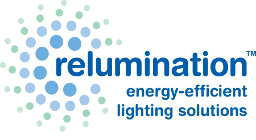Of course, we all know about the energy and maintenance savings that come from LEDs. In Indian Wells, California, the city replaced over 100 six-inch incandescent downlights in the City Hall, Emergency Operations Center, and Public Works Maintenance Facility with Cree LR6 LED downlights. The old incandescent lamps burned 3,640 hours per year and consumed 30,385 kilowatt-hours per year. Now, the new LEDs burn the same amount of time, but consume only 3,969 kilowatt-hours per year, saving the city almost $4,500. Not only can other office buildings benefit from savings seen at these municipal buildings in Indian Wells, but LED lighting can also improve the workplace for employees.
Many studies conducted have shown LED lighting can improve employee efficiency and morale. Fluorescent lighting can make workers feel sick and make them less productive during the workday, which hurts the employees and the company. High exposure to ultra violet rays from compact fluorescent lamps can increase feelings of depression and fatigue in employees. The lamps also generate heat and cause “hot spots” to occur on the lamps, which means the rest of the light dims, causing eye strain. CFLs also contain mercury, and exposure to mercury from broken lamps can cause permanent damages to the lungs, throat, and skin. LED lighting is a healthier alternative lighting option for office buildings. LEDs do not flicker, which decreases workplace strain and headaches. Studies have also shown LEDs can help reduce the risk of developing cancer in women who work in shifts or windowless environments.
We hope to see more office buildings choosing healthy, energy efficient LEDs to create a happier and more productive workplace.





